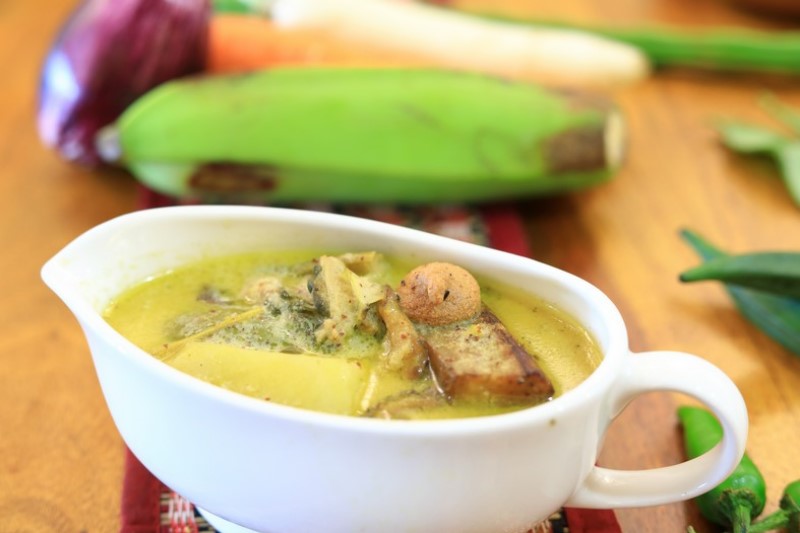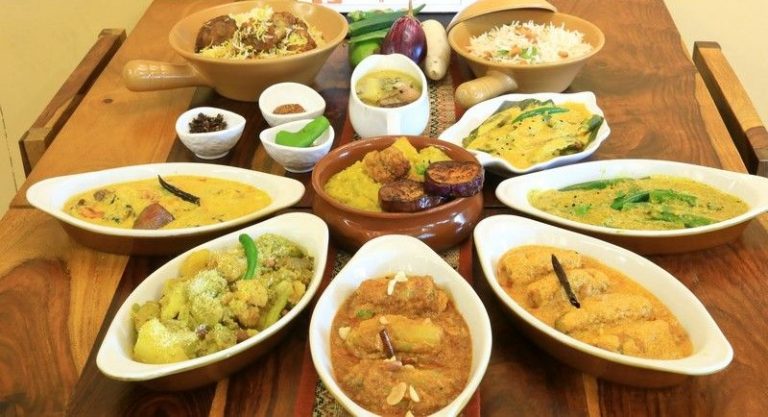There is an urban legend among a lot of Bengali families that in the early 1500s, Chaitanya Mahaprabhu came across a rather stubborn fisherman who wouldn’t budge an inch from his staunch non-vegetarian stance. It was his adamancy that forced Mahaprabhu to denounce Bengal and move to Puri (in present day Odisha). More than 500 years later, that fisherman’s spirit seems to have been kept alive and how by our present day Bengali brethren. 98.55% of Bengalis are non-vegetarians – that’s the highest concentration of non-vegetarians among all Indian states with Andhra Pradesh, Kerala and Assam just behind us.
There’s evidence to support that too. Bengalis eat in courses, and at least 2 out of the 5 courses will contain some meat preparation. Tuesdays and Saturdays – the “Niramish” days in a ton of households are looked upon with disdain as if all the joys of the dinner table have been sucked out.
A mere 3 years ago, however, there was a genuine shift towards the acceptance of “Niramish khaabaar” among Bengalis. Sure, a meat scandal rocked Bengal leading to meat sales touching rock bottom in the state, but vegetarian food was gradually making a mark in the kitchens of Bengali households, and not just as replacement for meats, but as individual dishes that earned their right to be on the dinner tables. The health benefits of vegetables was being realized in droves, and now, it wasn’t just “aloo” or “begun” that were bought from the markets by Bong dads to be made “bhajas” out of.
Vegetarian food in Bengal is crafted and presented in a gastronomically efficient way. Dishes are made to either cleanse your palette, or serve as easy yet hearty comfort food (like the “bhateys” or the “bhortas”), or replace the red proteins (such as “channa” or “dhoka’r dalna”), or just serve as tasty accompaniments to a large meal or even alcohol. Posto’r bora with beer while watching football? Sounds like an ideal Bangali evening! Even within preparations, there is a multitude of variations that signifies the diversity of each district. Shukto, for instance, has 3-4 variations with either papaya or raw banana or bottle gourd and even cucumber being the hero ingredient.
With that in mind, over the next 4 weeks, we’ll re-acquaint you with Bengal’s four most popular vegetarian preparations, starting with “Shukto” this week.
Shukto is a mild, sometimes bitter, milky curry that – within the structure of the Bengali meal is eaten after shaak (greens) and before dal (lentils). It is said to stimulate the appetite and prepare the palate for the oncoming spicier courses and the dessert in the end.
WHAT YOU’LL NEED:
(4 servings of Shukto)
- The Veggies –
- Drumstick – 2 sticks
- Sweet potato – 2 nos.
- Bitter gourd – 4 nos (medium sized)
- Raw banana – 1 (medium sized)
- Potatoes – 2 nos (medium sized)
- Cauliflower – 1 head
- Eggplant – 1 large
- Potol (Parwal / Pointed Gourd) – 3 nos (medium sized)
- Green Papaya – 1 (medium sized)
- Flatbeans – 7-8 nos.
- The Spices
- Mustard Powder – 1 tbsp.
- Ginger Paste – 1 tbsp.
- Paanchphoran – 1 tsp.
- Green Chili Paste – 1 tsp.
- Sugar – 1 tbsp.
- Salt – 1 tsp.
- The Essentials
-
- Vegetable oil – 4 tbsp.
- Ghee – 1 tbsp.
- Milk – 1 cup
- Water – 4 cups
- Bori – 12-15 pieces
NOTE: For the “Bori”, you can either whip up some by making a paste of chana dal (Bengal Gram), or buy some readymade dehydrated ones from your local East Indian market.
THE RECIPE:
- Make a smooth paste with the mustard powder.
- Make sure to wash all the veggies properly.
- Peel the outer skin of each vegetable except Eggplant
- Cut all the veggies into rectangular strips of ½ inch each, and Drumsticks into 2 inch long strips.
- Heat Oil in a Wok.
- Sprinkle some salt over the pieces of Eggplant and fry in the heated oil.
- Next, fry the Bitter gourd (having removed the eggplant)
- Now fry the “Bori” in medium flame and strain from oil.
- Temper the remaining oil with Panchphoron.
- Now fry the rest of the veggies (except for drumsticks) one by one.
- Do not strain the veggies from the pan from now on.
- Add the Ginger paste and cook for 1-2 minutes. To that add Mustard paste and again cook for around 2 minutes.
- Add Green Chili paste, Salt and Sugar, and cook for 1-2 minutes.
- Now add milk and water to the Spice mix and bring it to a boil.
- Add all the fried bori, eggplant and bitter gourd along with raw Drumstick and cover the wok with a lid.
- Cook for around 8-10 minutes on low flame or till the veggies are cooked properly.
- Check the water level, and if required add some more water since Shukto should be sufficiently flowy.
Add Ghee to the Curry and boil for around 2 minutes and switch the flame off.
Bengal’s darling – Shukto – is ready to serve.
Now isn’t that easy?
We, at Fifth Season Restaurants, are excited to take you on this delightful gastronomical experience. We say experience because “khaabaar” is meant to be relished. Food has the power to transport you to places that you hold dearest – whether it be the dorm room where you learnt to improvise while hungry, or straight back to your mum’s “ranna-ghor”. We live to eat, and that attitude is woven into every fabric of our being. Be it our chefs – who hail from all over Bengal, or our ambience – showcasing every little nuance that a Bengali household would have, Fifth Season lives and breathes Bengal, and this is a small step in distributing the essence of our dear state to all our patrons.
Tell us, what are your favorite Bengali Vegetarian dishes? Do you relish Shukto just as much as we do? Is there anything in this recipe that you would modify? What song would you want to listen to as you eat Fifth Season’s delectable preparations? The comments section of our blog is your canvas.
Your feedback is just as important to us as paanchphoran is to Shukto. As we ride through this pandemic – jointly, yet socially distanced – food is the one thread that stitches us together. Join us on this culinary adventure, stay safe, order in from Fifth Season, and inch closer to the comforts and flavors of home.



